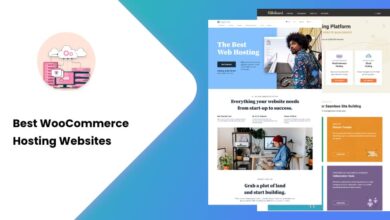Key Strategies to Optimize Your Website’s Conversion Path

Converting online traffic into actionable results is a pivotal measure of success for digital businesses. Central to achieving this is a robust understanding of conversion rate optimization services, which provide a systematic approach to improving the performance of your website. By focusing on the visitor’s experience and the website’s usability, businesses can convert a higher portion of their visitors into customers. This process is not just about changing elements on a page but about understanding your visitors’ behavior and providing them with a seamless journey from arrival to conversion.
Understanding Conversion Rate Optimization (CRO)
Conversion rate optimization is a structured approach to increasing the percentage of users who perform desired actions on a website. Actions can range from purchasing a product to signing up for an email list or downloading a document. Understanding your audience’s needs and behavior is critical to creating an environment that encourages conversions. This practice involves various methods and tools designed to improve the effectiveness of your site’s conversion goals and analyze and modify aspects of your content, site design, and user flow to make the path to conversion as intuitive as possible.
Crafting a Compelling First Impression
Your homepage acts as the virtual front door to your business and should welcome visitors with open arms. It means having a clear, concise message about who you are and what value you bring to the customer. An impactful first impression is achieved through a balance of compelling visuals, easily digestible content, and intuitive site architecture. Ensuring that your homepage communicates the essence of your brand quickly and effectively is vital to hooking the visitors’ interest and enticing them to explore further.
The Role of A/B Testing in CRO
A/B testing, or split testing, is the scientific comparison between two web page versions to see which performs better. This approach allows you to make data-driven decisions and eliminate much of the guesswork in website optimization. Effective A/B testing requires a systematic approach, testing one change at a time to glean accurate insights into the impact of modifications. Whether you’re comparing headlines, images, or CTA buttons, A/B testing provides the evidence needed to make informed decisions that will incrementally improve conversion rate optimization services.
Optimizing Landing Pages for Higher Conversion Rates
The heart of CRO frequently lies within the landing pages—specific sections designed to convert traffic. These pages must be concise, with a clear headline, a brief description of the offer’s value, and a straightforward path to conversion. It is also crucial to match the landing page content with the advertisement or link that brought the user there in the first place to maintain coherence and reduce bounce rates. When optimized effectively, landing pages are the ultimate conversion tool, turning visitors into leads and customers.
The Importance of Mobile Optimization in CRO
With the burgeoning prevalence of mobile internet usage, ensuring your website is optimized for mobile users is more important than ever. A mobile-friendly website is not just about shrinking the desktop version to fit a smaller screen; it’s about creating an enjoyable user experience specifically for mobile. It includes easy navigation, fast load times, and streamlined content that gets straight to the point. Mobile optimization goes a long way in reducing bounce rates among mobile users and improving overall conversion rates.
Building Customer Trust and Confidence
In an online world fraught with uncertainty, trust is a scarce commodity. Highlighting social proof through testimonials, case studies, and user reviews can significantly impact your credibility. Moreover, displayed security measures, transparent policies, and easy-to-find contact information all build upon the foundation of trust. When users feel secure and confident in your website, they are more likely to convert from visitors to customers.



